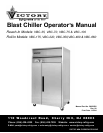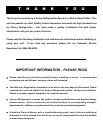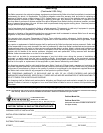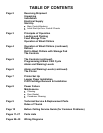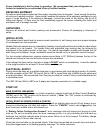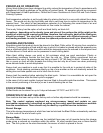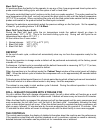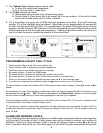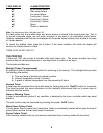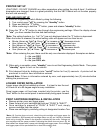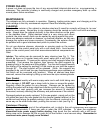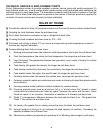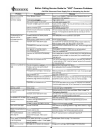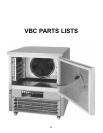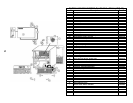
PRINCIPLES OF OPERATION
Victory blast chillers have been designed to quickly reduce the temperature of food in accordance with
Department of Health guidelines on the chilling of cooked foods. All operators should be conversant
with Department of Health publication, Chilled and Frozen Guidelines on Cook-Chill and Cook-Freeze
Catering Systems.
Fast temperature reduction is not brought about by placing the food in a very cold cabinet like a deep
freeze. This would only dry the food badly and take a very long time to reduce its temperature to the
required level. The secret of fast temperature reduction is in delivering the correct blast of air and
ensuring correct and unobstructed horizontal air flow inside the cabinet.
This is why Victory has the option of soft and hard facility on blast chill.
Exceptions: depending on the density types and sizes of the portions the chiller might not be
capable of achieving the required guidelines, therefore, the load and/or depth of the food layers
should be reduced. You may find it necessary to experiment with different amounts of food
and loading methods in order to achieve the optimum performance with your blast chiller.
LOADING AND PACKING
Regulations state that product should be placed in the Blast Chiller within 30 minutes from completion
of cooking. The packaging of food and the way in which it is loaded or placed within the apparatus can
have a significant effect on the time within which the temperature can be reduced to the required level
and the amount of food which can be processed in each chilling batch.
When blast chilling always use metal or foil containers which are good conductors. Plastic or
polyurethane containers insulate the food from the cold air. When chilling unportioned food we
recommend the use of the appropriate pan that is at least 2-1/2” [63.5mm] in depth. Likewise, placing
lids or covers on food will also increase the chilling time but may be of some use when processing
some delicate foods to avoid dehydration.
Always load your machine in such a way that it is possible for the cold air to contact all sides of the
containers. Avoid stacking containers directly on top of one another as this will drastically extend the
chilling time and take special care not to block the air ducts.
Always load the machine before selecting the blast cycle. Unless it is unavoidable do not open the
door of the machine while the blast cycle is engaged.
In the case of roll-in rack models, bumper bars are fitted to the walls inside the machine. This assists
in the correct positioning of the rack(s) so as to avoid blocking the air flow.
FOOD STORAGE TIME
Chilled foods can be stored for up to 5 days at between 32°F/0°C and 38°F/+3°C.
OPERATION OF BLAST CHILLERS
Your machine has been set-up at the factory and no further adjustments should be necessary.
Note: The control systems employed are micro-processor based and contain no user
serviceable components. Instructions on setting up the control panel thermostats are available
from the manufacturer. These should only be reset by a qualified service technician.
Normal Storage:
This is the storage temperature at which food can be held and the Blast Chiller automatically switches
into this mode at the end of each cycle.
Storage Mode
On some chillers there is more than one fan installed these may not all operate during the storage
mode giving a reduced air circulation within the chiller. All other models have one or more Aerofoil
fans. The unit cycles on the store thermostat, the sensor of which is placed in the air.
3



